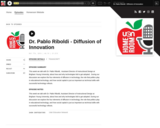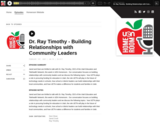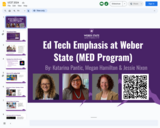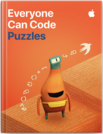
This article describes how one teacher incorporates digital citizenship skills in authentic contexts.
- Subject:
- Professional Learning
- Material Type:
- Reading
- Provider:
- International Society for Technology in Education
- Date Added:
- 10/02/2023

This article describes how one teacher incorporates digital citizenship skills in authentic contexts.

This week we talk with Dr. Pablo Riboldi, Assistant Director of Instructional Design at Brigham Young University, about how and why technologies fail to get adopted. During our discussion we explore the four elements of diffusion in technology, the role that politics play in educational technology, and how social capital is just as important as technical skills with successful technology rollouts.

Jared and Dani are thrilled to talk with Dr. Ray Timothy, CEO of the Utah Education and Telehealth Network, this week in UEN Homeroom. Our conversation focuses on building relationships with community leaders and we discuss the following topics: how UETN plays a role in procuring funding for education in Utah, the role UETN will play in the future of technology needs in schools, how school or district leaders can build relationships with their local communities, and how UETN makes a difference for students and families in Utah.

This EdCamp is a collaboration between Alpine, Provo, Nebo, and Juab school districts and Utah Valley University. An EdCamp is a free public events that leverages the knowledge and experiences of attendees by allowing educators to collaboratively determine topics for discussion the day of the event. Educators facilitate sessions by using their experiences to drive conversation with their peers. Educators are encouraged to find EdCamp sessions that best meet their needs to maximize learning.

Information about the Ed Tech emphasis in the MED program at Weber State

This blog post breaks down the basics of copyright, fair use, the public domain, and Creative Commons, particularly as applicable to educators and students.

This guide explains the basics of copyright and fair use and why it is important for educators and students to learn about copyright.

The Big6 is a six-stage model to help anyone solve problems or make decisions by using information. Students can use this model to guide them through the research process. This resource helps students evaluate their research skills using the Big6 model.

The Big6 is a six-stage model to help anyone solve problems or make decisions by using information. Students can use this model to guide them through the research process. This page of the Big 6 website is a guide to help you develop Big6 units for your curriculum standards or objectives.

The Big6 is a six-stage model to help anyone solve problems or make decisions by using information. Students can use this model to guide them through the research process. This resource describes a Big6 lesson focused on the final step of the Big6 model, evaluation.

Everyone Can Code Puzzles is an all-new student guide to Swift Playgrounds that reinforces problem-solving strategies and critical-thinking skills through over 40 hours of flexible activities. Each chapter helps students build on what they already know, experiment with new coding concepts, apply their understanding, and creatively communicate how coding impacts their lives.

This resource is a research review exploring the relationship between Universal Design for Learning (UDL) and Differentiated Instruction (DI). Abstract: A lot of confusion between UDL and DI exists, especially on how they exactly relate to each other. Consequently, a systematic review was conducted to identify all specific types of interrelationships between both pedagogical models in the literature. In total, 27 peer-reviewed articles were included. Three conceptual interpretations of the UDL and DI interrelationship were identified.

The Big6 is a six-stage model to help anyone solve problems or make decisions by using information. Students can use this model to guide them through the research process. This resource guides students through writing a fiction book report.

The Big6 is a six-stage model to help anyone solve problems or make decisions by using information. Students can use this model to guide them through the research process. The Super3 is a simplified version of the model for younger students. This worksheet uses the familiar Flat Stanley project to guide students through the Super3.

Get Googley with UEN! This new series teaches you how to use Google products and features in your classroom successfully. In this first episode, host Matt Winters shares his tips and tricks for using Google shortcuts in your everyday teaching.

The Big6 is a six-stage model to help anyone solve problems or make decisions by using information. Students can use this model to guide them through the research process. This resource is a lesson plan that uses the Big6 model to help students determine how to earn an 'A' grade.

This self-paced course from ISTE covers how to teach and model digcit so you can help students be responsible and active in online communities.

The Big6 is a six-stage model to help anyone solve problems or make decisions by using information. Students can use this model to guide them through the research process. This page of the Big 6 website includes an article about the connection between the Big6 and technology.

The Big6 is a six-stage model to help anyone solve problems or make decisions by using information. Students can use this model to guide them through the research process. This page of the Big 6 website includes a presentation about inquiry learning.

The Big6 is a six-stage model to help anyone solve problems or make decisions by using information. Students can use this model to guide them through the research process. This resource is a unit plan for integrating the Big6 and science curriculum.